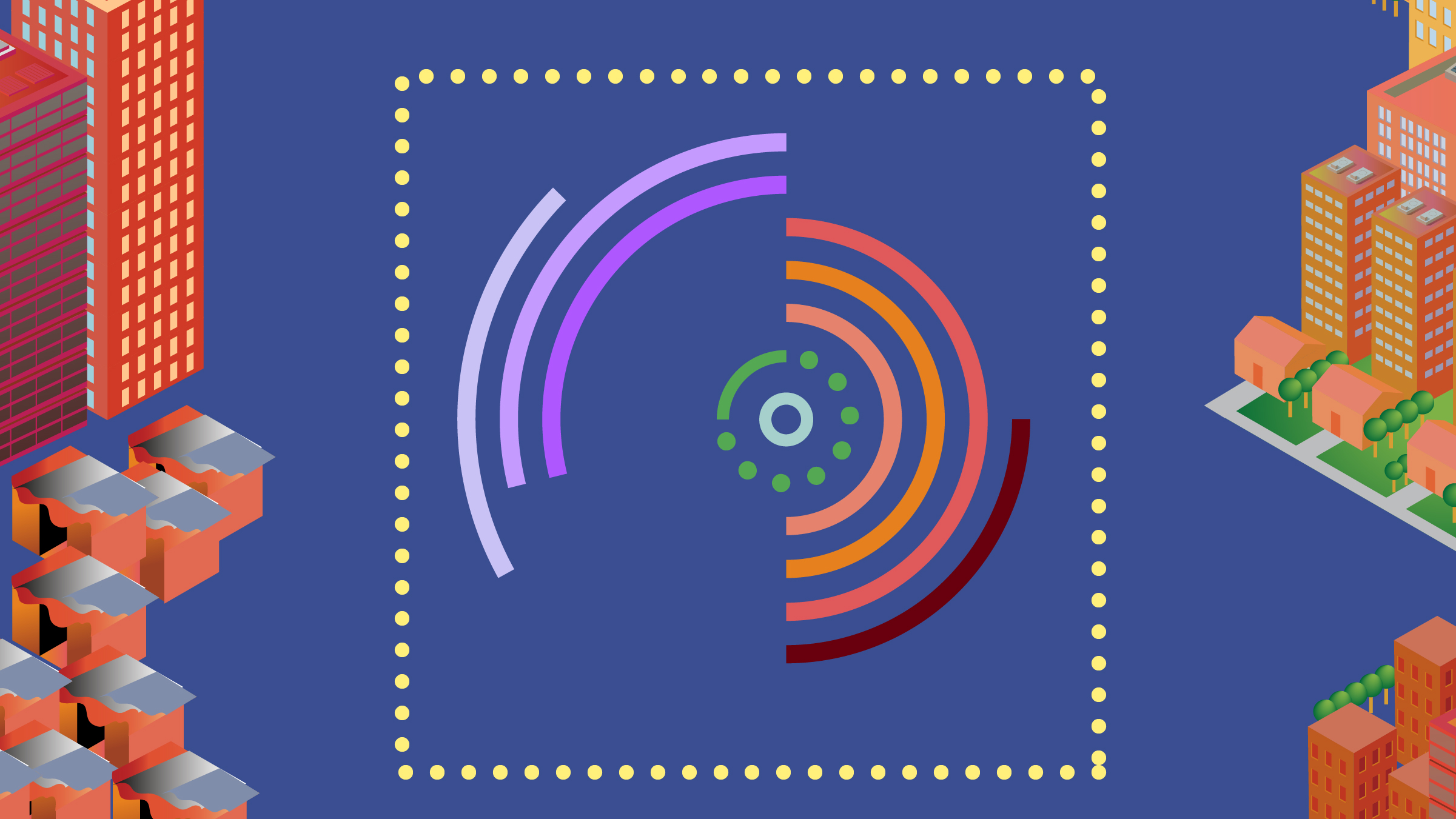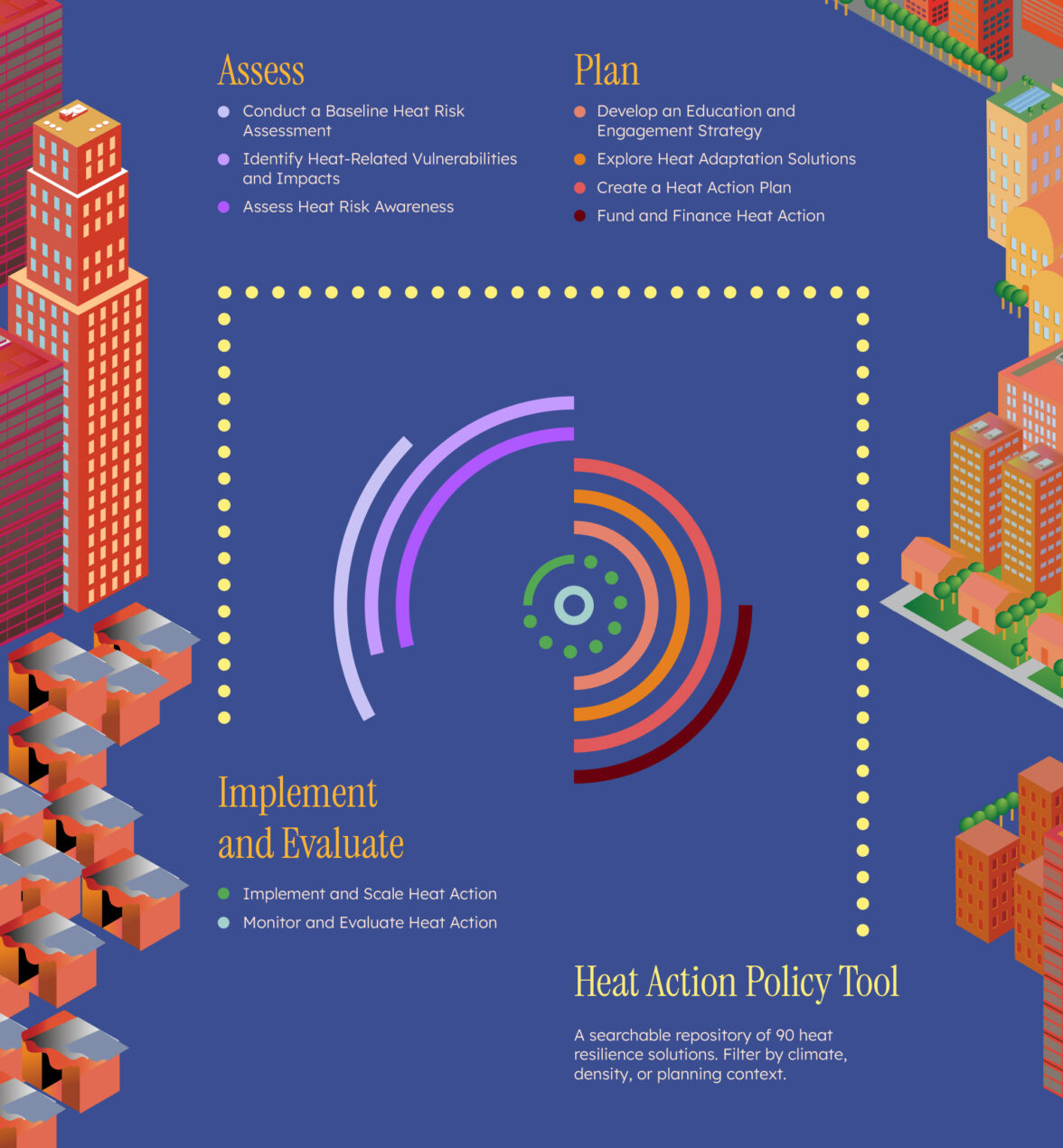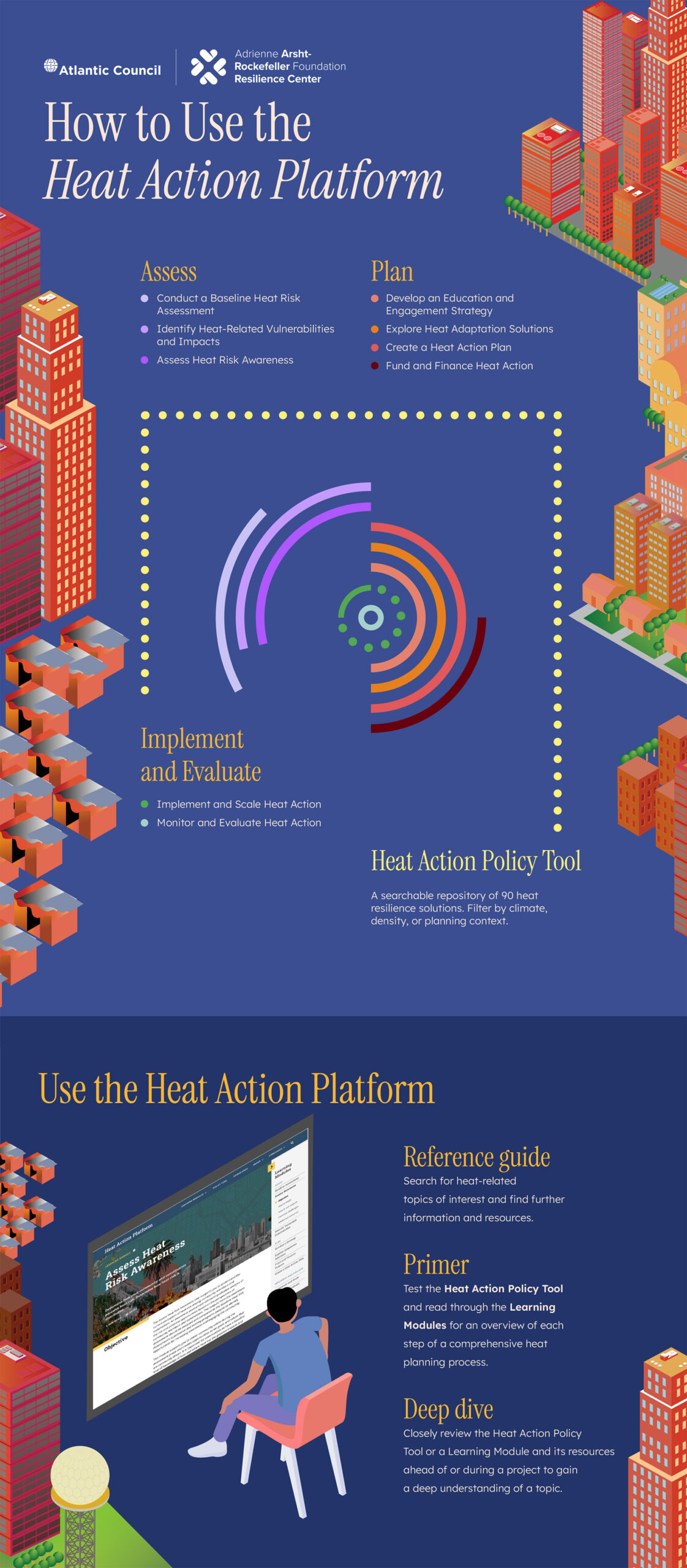The Heat Action Platform will support you to:
- Develop a heat action plan or similar planning/goal-setting initiative;
- Create an individual project or policy intervention with heat resilience and preparedness goals;
- Embed heat resilience and preparedness strategies into another plan; or
- Make the case for investments in community heat resilience.
Frequently Asked Questions
Who is this platform for?
- Practitioners: Urban planners, climate change officers, chief resilience officers, chief heat officers, chief sustainability officers, and government officials focusing on emergency preparedness and response, climate change, public health, energy and environment.
- Policymakers: Elected officials including mayors, governors, city and county/regional commissioners, and their senior advisors on environment, climate change, resilience, health, and emergency preparedness and response.
- Development finance institutions: Specialized financial institutions that raise risk capital to finance economic development and climate action projects.
How does the platform support practitioners?
The platform supports practitioners with a framework, technical resources, and case studies to develop an actionable heat resilience plan or a specific heat resilience project through:
- Best practices for mitigating and adapting to extreme heat and case studies;
- Inventory of solutions applicable to local context;
- Monitoring and evaluation frameworks to inform quantifiable metrics and assessment methods; and
- A direct channel to world-leading experts on heat risk and impact reduction.
How does the platform support policymakers?
The platform informs policymakers about the risks and opportunities for addressing extreme heat to empower them to set achievable and measurable targets that constituents and fellow elected officials will support. Toward this end, the platform will provide:
- Background material that articulates the urgency of enhancing resilience to extreme heat;
- Best practices for heat-risk reduction and adaptation policies and action-oriented solutions; and
- Monitoring and evaluation frameworks to inform quantifiable metrics to demonstrate impact.
How does the platform support development finance institutions?
Development finance institutions can use the platform as a credential and resource, directing potential government partners to follow the steps to build capacity and develop quality heat action plans and/or projects.
How can I collaborate with Arsht-Rock to implement what I’ve learned?
By itself, any guide or toolkit will be a limited answer to the needs of the people responsible for developing and implementing projects.
As part of this platform, users have a direct channel to working with Arsht-Rock and receiving technical assistance on the implementation of platform modules or specific heat resilience projects.
Throughout the modules, you will see contact information for the Arsht-Rock representative who you can reach out to discuss potential collaboration




